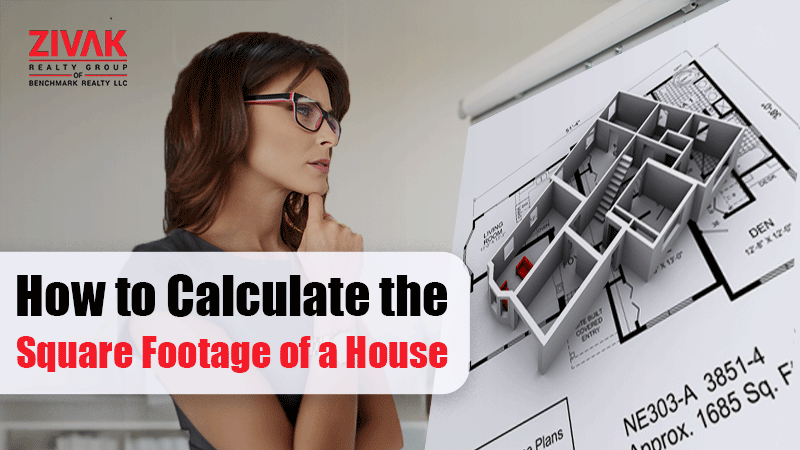Summary
Knowing how to calculate a house’s square footage is an essential skill. This easy-to-learn trick can save you time during your DIY activities.
Life becomes easier once you know an area’s total square footage! You can easily estimate the cost of materials for laying new floors or assigning home improvement contracts.
What’s more? Learning about square footage will also allow you to enhance your renting literacy. It can help you calculate the price of your space and break down real estate purchases into a per-square-foot value.
So, if you’re still wondering how do you calculate the sq ft of a house, this blog is for you. Continue reading as we learn more about it
in the following sections.
What is Square Footage?
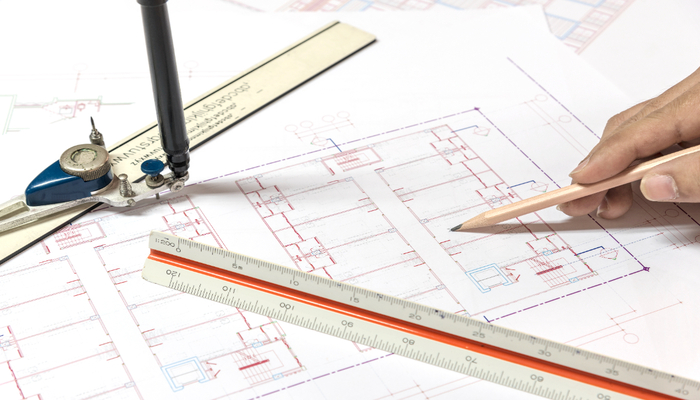
In simple terms, square footage is the amount of flat space in a given location. For instance, let’s say you know your room is 8 feet broad and 12 feet long.
You know the breadth and length, but how much surface area are you looking at? How can you determine whether your furniture or setup fits comfortably in that area?
The square footage indicates the surface area you must deal with when buying homes for sale in Franklin, Tennessee, or some other area. This formula will help you decide what size rug to buy and whether your room can accommodate a full or queen-size bed. It gives you an idea of the usable square footage available and the area covered by your bed’s footprint.
Why It’s Important to Know Your Home’s Square Footage?
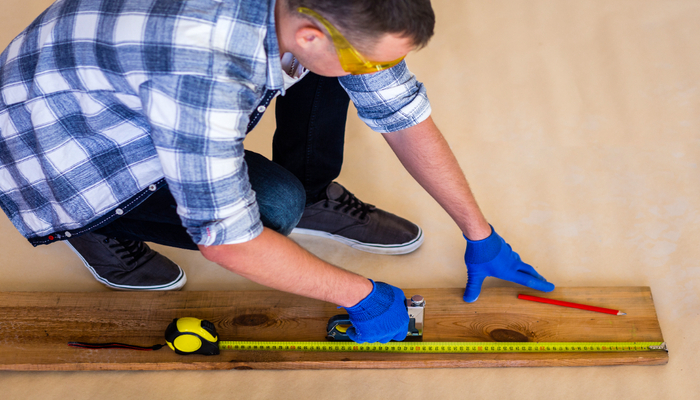
1. Determining Rent and Property Value
Square footage is an important factor in establishing the rent or value of a rental property. Typically, homes with more square footage fetch higher rentals and market value. Real estate brokers, property appraisers, and potential renters frequently use a home’s square footage to compare its worth or rent to similar properties.
2. Obtaining the Certificate of Occupancy
A Certificate of Habitation (CO) is an important document that certifies a building’s adherence to local building rules and proclaims it is legally safe. The property’s square footage is one of the most important elements to examine when issuing a CO. This measurement determines if the property fits specific space criteria, including safety and habitability norms.
3. Applying for Mortgage
Financial institutions look at square footage when property owners apply for a mortgage or financing using their rental property as security. Lenders use the valuation of the property, among other considerations, to calculate the interest rate, loan amount, and conditions. The size of the property, as measured by square footage, influences its market value. Accurate square footage enables lenders to assess risk and identify the property’s current market value, ensuring the loan amount is adequate and reasonable.
4. Listing Your Property
In today’s digital age, most property searches start online. Potential renters frequently utilize square footage as a filter when searching for rental homes that meet their requirements. Listing proper square footage attracts the right renter population and fosters confidence. Misrepresentation can cause dissatisfaction when potential viewers visit your property, wasting time and damaging the landlord’s reputation.
5. Planning and Future Modifications
Square footage is essential when considering any repairs or upgrades to a rental property. For instance, when planning to buy condos for sale in the Gulch Nashville, TN, it’s important to know the correct square footage. It will be critical if you plan to partition the property, make structural changes, or build an extra room. It aids in evaluating costs, establishing feasibility, and ensuring that any changes do not impair the property’s usefulness or value.
How to Calculate Square Feet of A House?
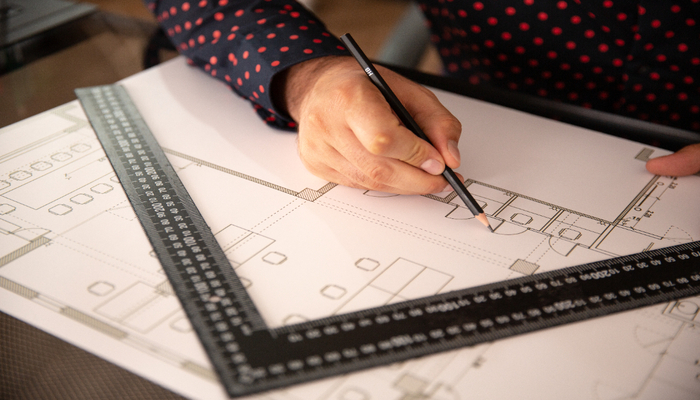
To get the square footage of any area, multiply its length and breadth (height x width). The unit of measurement will influence how you calculate square footage.
Square feet are the most prevalent measurement used in the United States for room sizes and DIY home supplies. Other units of measurement, such as inches or yards, may be easily translated using the fundamental method.
Let’s look at the basic formula for calculating square feet:
‘Length (in feet) x width (in feet) = area in sq. ft.’
To calculate sq. ft. (feet squared), measure the length and breadth of the area in feet. To calculate square feet, multiply the length by the width.
Pro Tip:
If you don’t understand what a square foot is, try drawing a square that is one foot tall and one foot wide – that’s one square foot!— Enough of those squares are put together, and they form a whole wall, floor, piece of cloth, and wallpaper, among other options. You are measuring the overall area rather than just the height or width.
How to Get the Square Footage of A House?
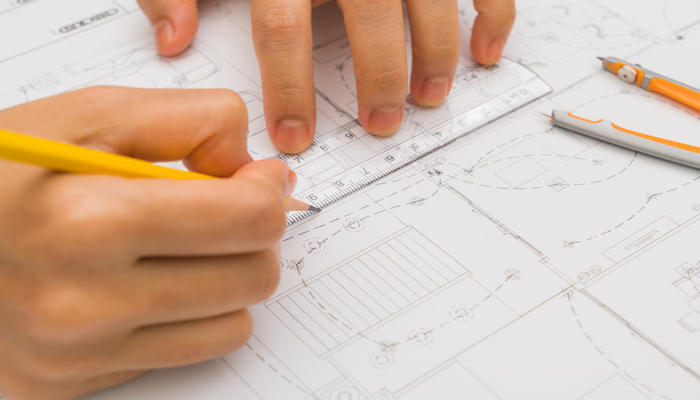
Step 1: Know What You’re Measuring
When measuring a property, there may be differences in how you and some other person measure the square footage of your house. The gross square footage of a house, or the whole footprint of the building on the site, is measured along the external walls.
Professionals use these calculations in the building and construction sector. Only the living space for different Brentwood, Nashville houses for sale is measured by net square footage; walls and other areas deemed unfit for habitation are omitted.
Step 2: Work Room by Room
Before you learn how to calculate sq feet of a house, it’s important to determine the interior living area, figure out how big each room is, and then add them up to determine the home’s overall square footage. To find a room’s straightest line, measure where the wall and floor meet, if feasible.
Step 3: Calculate Square Footage in Rooms of Different Shapes
Rectangular rooms: Calculating the square area of a rectangular or square room is simple; just apply the length x breadth formula.
Rooms with closets: Consider a room with closets as your rectangular room with small add-ons. You can calculate the area by adding up the square footage of each rectangle.
Odd-shaped rooms: The typical area measurement instrument may also be used in odd-shaped rooms. To compute independently, divide the space into individual, simple parts and add the findings. If your area has many angles, utilize this formula for a triangle—it’s simply a rectangle or square divided in half!
Formula: ‘Length (in feet) x width (in feet) ÷ 2 = area in sq ft’
Step 4: Add Measurements Together
Remember to compute the room’s total square footage by adding the areas of the forms together. To calculate the internal square footage of your home, repeat the process throughout, ensuring to account for closets and corridors.
Note: Measure to the closest inch for precision.
What to Leave Out of Your Square Footage Calculation
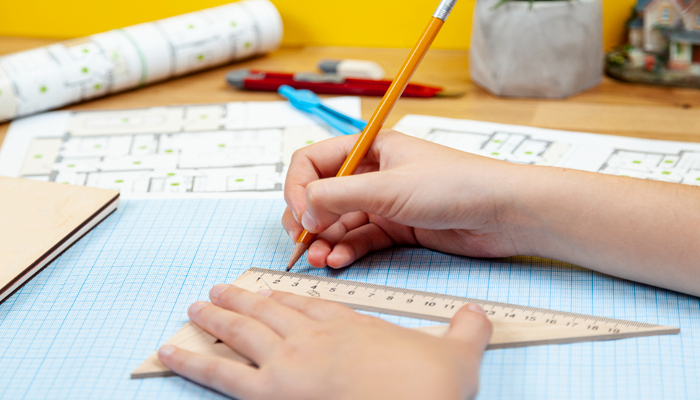
The square footage you’re most likely interested in is the completed living floor area, which appraisers also consider. Keep the following places out of your calculations.
Unfinished attic area
Space between the walls
Any room or section of a room with a ceiling less than 7 feet tall
Utility room
Garage
Basement area that is below grade, even if completed.
An attic or basement must have a code-compliant floor, egress, ceiling, and walls to be counted as habitable. However, a finished basement should not count against the property’s gross living area and should be marked separately as the basement.
Common Mistakes to Avoid When Calculating Square Feet
1. Incorrect Measurements
Not Double-Checking: Like the carpenter’s guideline of “measure twice, cut once,” you should constantly double-check your calculations. Minor variations can substantially influence overall square footage.
Using the Wrong Tools: A standard tape measure for big spaces might result in mistakes. A laser distance measurer or a long, strong tape designed for architectural measurements may produce more precise findings.
2. Ignoring Non-Livable Spaces
While certain spaces, such as unfinished garages or basements, are not usually considered usable square footage, they hold value. If you’re calculating for reasons other than buying luxury condos for sale downtown nashville tennessee, such as painting, cleaning estimates, or flooring, you’ll need to account for these costs. Make sure you understand appropriate spaces to add based on your objective.
3. Overlooking Irregular Areas
Not every property isn’t usually perfectly rectangular! Bay windows, alcoves, or other architectural characteristics might prevent a simple length x width calculation. Overlooking these anomalies might lead to substantial errors.
Takeaway: Usable Square Foot
In commercial real estate, “usable square footage” refers to the space a tenant may utilize, excluding standard features such as stairwells, corridors, and lobbies.
In residential real estate, usable square footage refers to the surface area of your own space in the home, as opposed to communal areas like storage closets, corridors, and social spaces like kitchens and living rooms.

